Author: J1N, Techub News
Preface
Kuzco, which I am sharing today, is a network dedicated to LLM large language model computing power mining. This year, it was selected into the Crypto Startup Accelerator (CSX) Fall Accelerator Program launched by a16z in New York . Projects selected by the program will receive at least $500,000 of investment from a16z within 8 weeks, and will receive guidance and support from the a16z operations team. Currently, there are about 2 weeks left until the end of the program.
The Kuzco project is still in a very early stage. It belongs to the same GPU computing network field as io.net, but takes a different development direction. Due to its strong financial support and background, io.net has completed airdrops to users earlier than Kuzco, and has successfully launched on mainstream cryptocurrency exchanges such as Binance, Coinbase, and Bybit, gaining greater market exposure.
The author has personally participated in the mining of io.net. To be honest, the whole process is like letting the graphics card "make money while lying down". You only need to leave the graphics card idle, and it will automatically generate income for you, and you don't even have to spend much on electricity. Each mining machine consumes only 1.2 kWh of electricity per day, and the total electricity bill for three months is only $10.8. Add to that the depreciation of second-hand graphics cards and the fraction of Internet tools, and the cost of $100 to $200 can be easily solved. In the end, I got a profit of $4,000. No matter how you look at it, this project is like a "castle in the air" that spirals upward with the left foot stepping on the right foot.
The subsequent decline in token prices has verified this. In addition, the author has compiled an article titled "Prices Plummeted 70%: How Did the AI Computing Power Leasing Bubble Burst?" This article further reflects the bubble in the AI computing power market. Whether it is the decline in the rental market price or the project tokens, the market is correcting the true value of these projects. This price correction is in line with market laws, indicating that the future may develop in a more rational direction.
Kuzco is significantly different from the previous popular project io.net in terms of mining mechanism. io.net is a "castle in the air". It can easily get dozens of times the profit by relying on the graphics card to hang up, and the actual value behind it is not obvious. Kuzco is more down-to-earth and has the support of a16z. I spent several weeks carefully testing mining machines with different configurations, including single card, multi-card and different system construction. Through these actual operations, I will share these practical experiences with you to let you know a mining project that provides real value to users, rather than a false prosperity supported by bubbles.
Dedicated service for LLM large language model computing power mining network
Kuzco is a decentralized GPU network in the Solana ecosystem, which aims to utilize the idle GPU resources of individual users to provide efficient and cheap computing services for large language models (such as Llama3, Mistral, Phi3). Users can use these models through an API compatible with OpenAI. Kuzco's distributed architecture can integrate idle computing resources to realize the operation of large language models, while incentivizing miners who provide computing power through a reward mechanism.
Project operation status
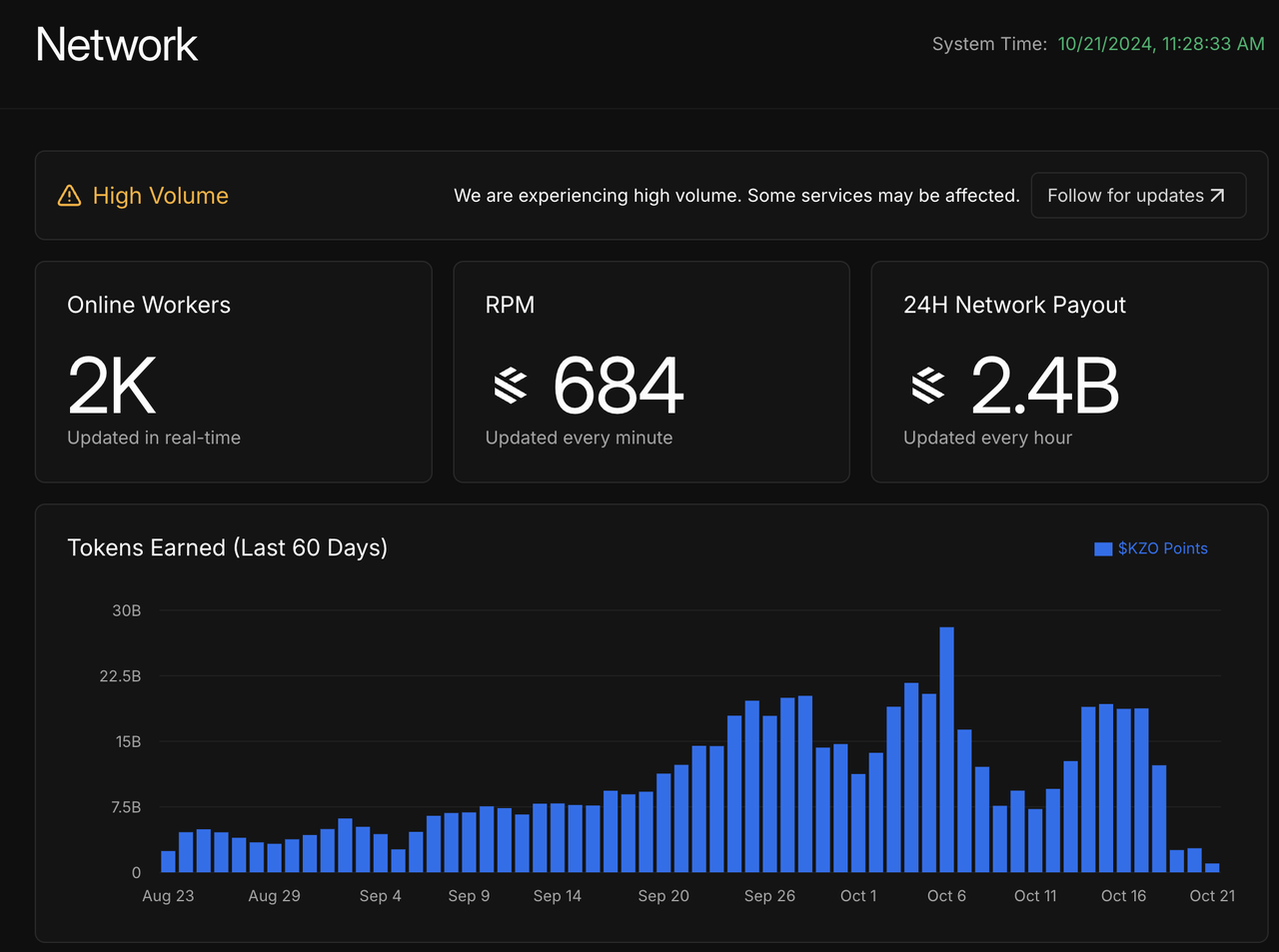

As of October 21, the Kuzco project has 2,000 online GPU miners, and the highest number has reached 6,000. The most commonly used GPU models include 3090, 3060, etc. Miners currently receive KZO Point rewards, but these points cannot be cashed out, and the project has not yet announced the token economic model. The author speculates that as the a16z accelerator program progresses, the project may have more new progress and updates in the future.
How to deploy
Official Hardware Requirements
The Kuzco project can run on Mac, Windows and Linux operating systems, and supports a variety of different hardware configurations. The minimum system requirements are 16GB of running memory, 30GB of available disk space and at least 10MB/s of network bandwidth. Kuzco supports NVIDIA (N card) and AMD (A card) graphics cards with at least 8GB of video memory. The minimum requirement for N cards for ordinary users is GTX750, while most professional computing graphics cards support it.
However, I do not recommend using A cards for mining, because AMD graphics cards have poor compatibility, especially in AI tasks, they do not perform as well as N cards. If you must use A cards, you need to check the official compatibility support list . In the field of AI, I must say: AMD, NO!
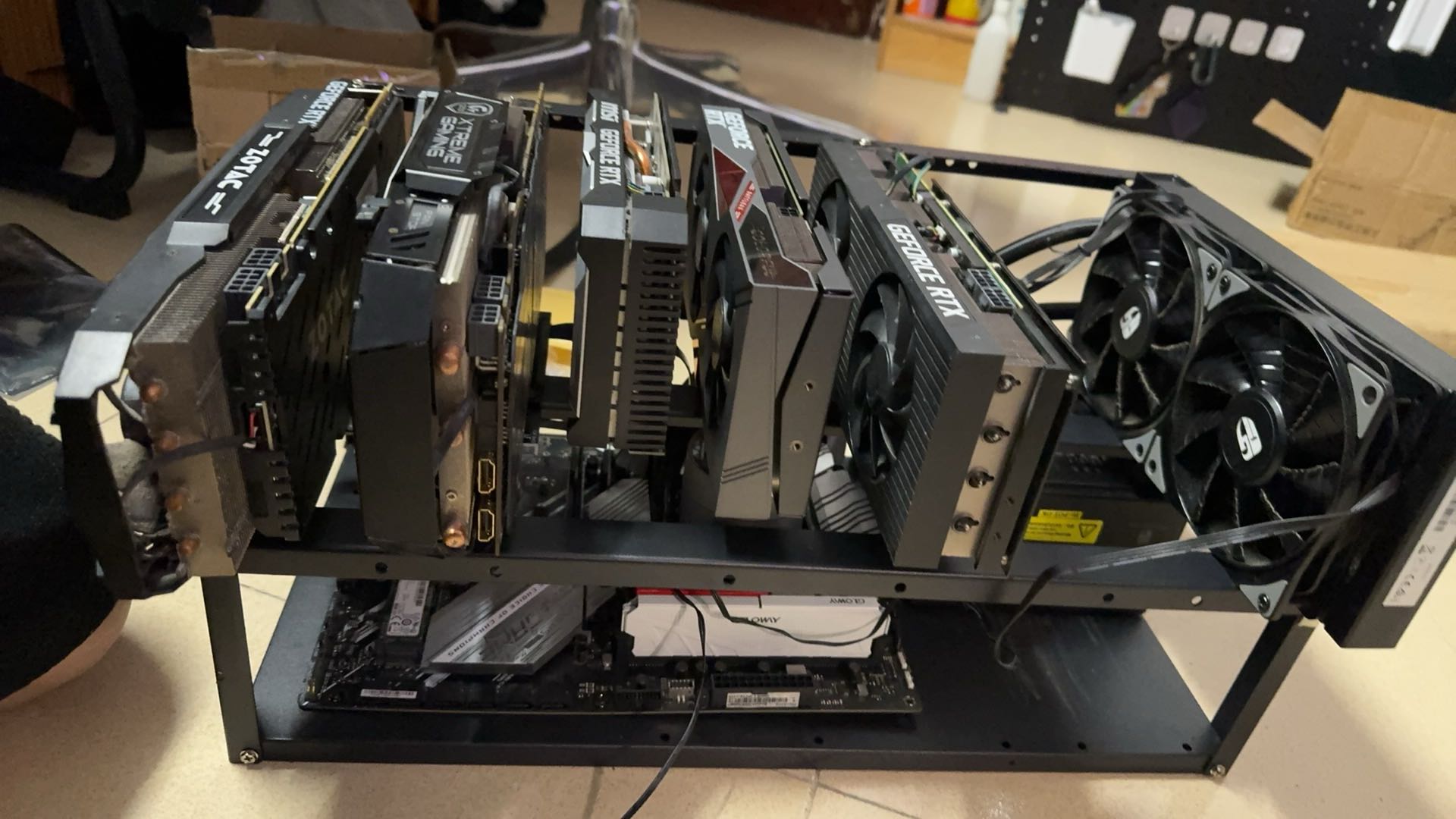
The author's five-card platform, motherboard Huazi Z490
The author tested the mining efficiency of several hardware, but due to network fluctuations, the efficiency performance may fluctuate.
GTX1070: 20 tok/s
RTX2060: 30 tok/s
RTX2070S: 40 tok/s
RTX3080: 80 tok/s
RTX4060Ti: 50 tok/s
RTX4070S: 70 tok/s
M2: 20 tok/s
M3: 30 tok/s
Unit: Avager Tokens / Second (Average number of tokens calculated per second)
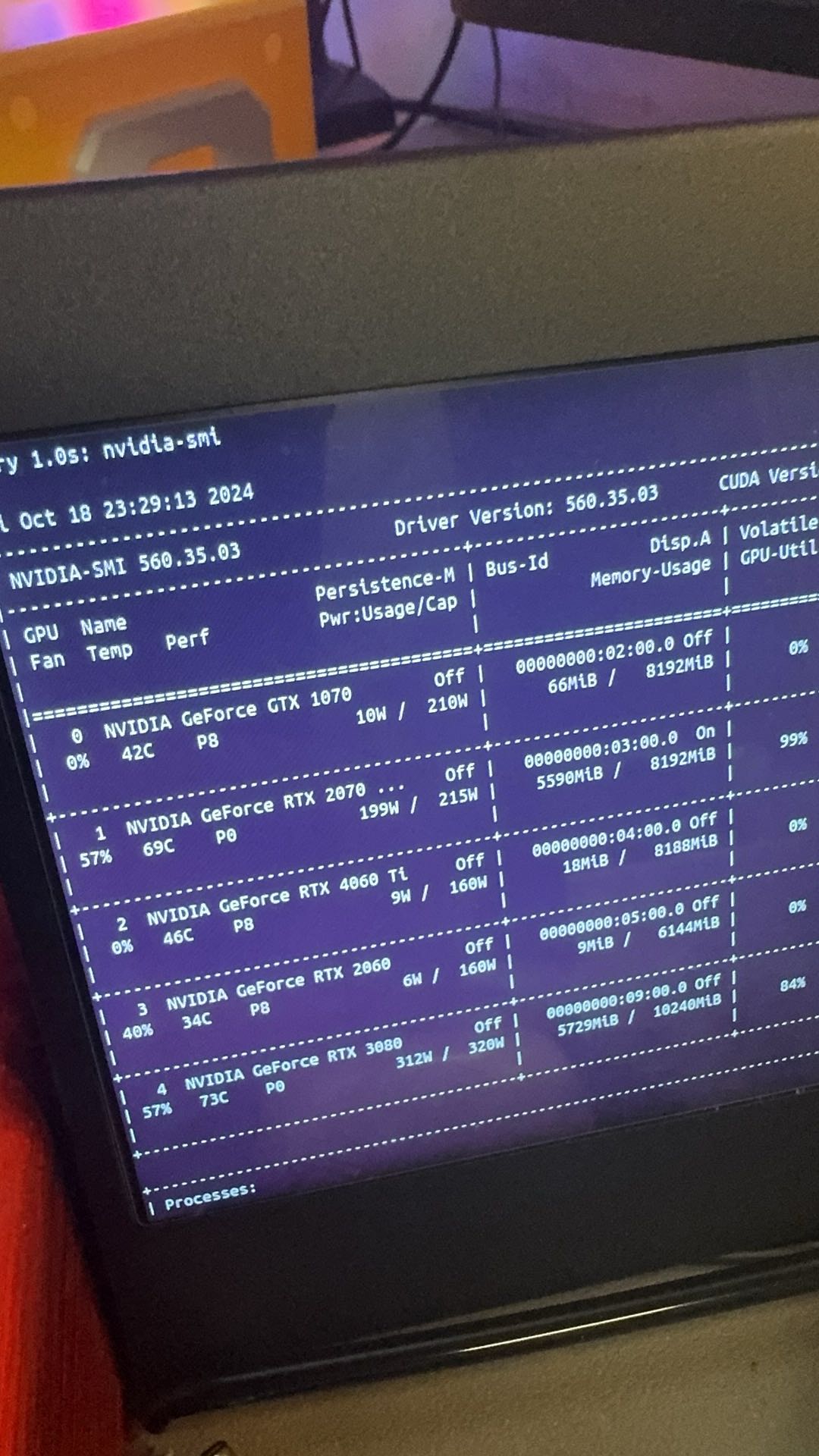
Real-time monitoring of mining machine operation
Deployment
Kuzco provides a client application that users can download and use to start mining, but this method is sometimes unstable, may drop the line, and will not restart automatically. The author recommends a more stable approach is to use the Linux system or Windows's WSL (Windows Subsystem for Linux) environment to start mining through the command line (CLI) or Docker container. If you need to use multiple graphics cards, you can specify a GPU through the Docker container in Linux for multi-card mining. For example, to specify GPU0: "docker run --rm --runtime=nvidia --gpus '"device=0"' -d kuzcoxyz/worker:latest --worker <workerid> --code <code>", you can start multiple GPUs
When mining with multiple cards, please pay attention to the following hardware aspects:
Power supply : Power supply is the key, and you cannot save money. It is recommended to purchase according to the standard of "1 RMB = 1 Watt" and try to use a gold-grade power supply. When mining, choose a power supply of 1500W to 2000W according to the number of graphics cards, or use multiple power supplies, but multiple power supplies require additional startup cables to connect the motherboard to power supply normally. Otherwise, it cannot start normally.
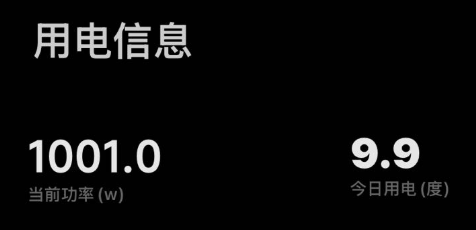
Power consumption information
Wires: In a high power consumption environment, the power cord is easily damaged, so the author recommends using a better quality power cord. In addition, the wire interfaces used by modular power supplies of different brands are different and cannot be used interchangeably. If wires of different brands are used, the device may be damaged or burned. Therefore, the wire must be consistent with the brand of the power supply to ensure compatibility.
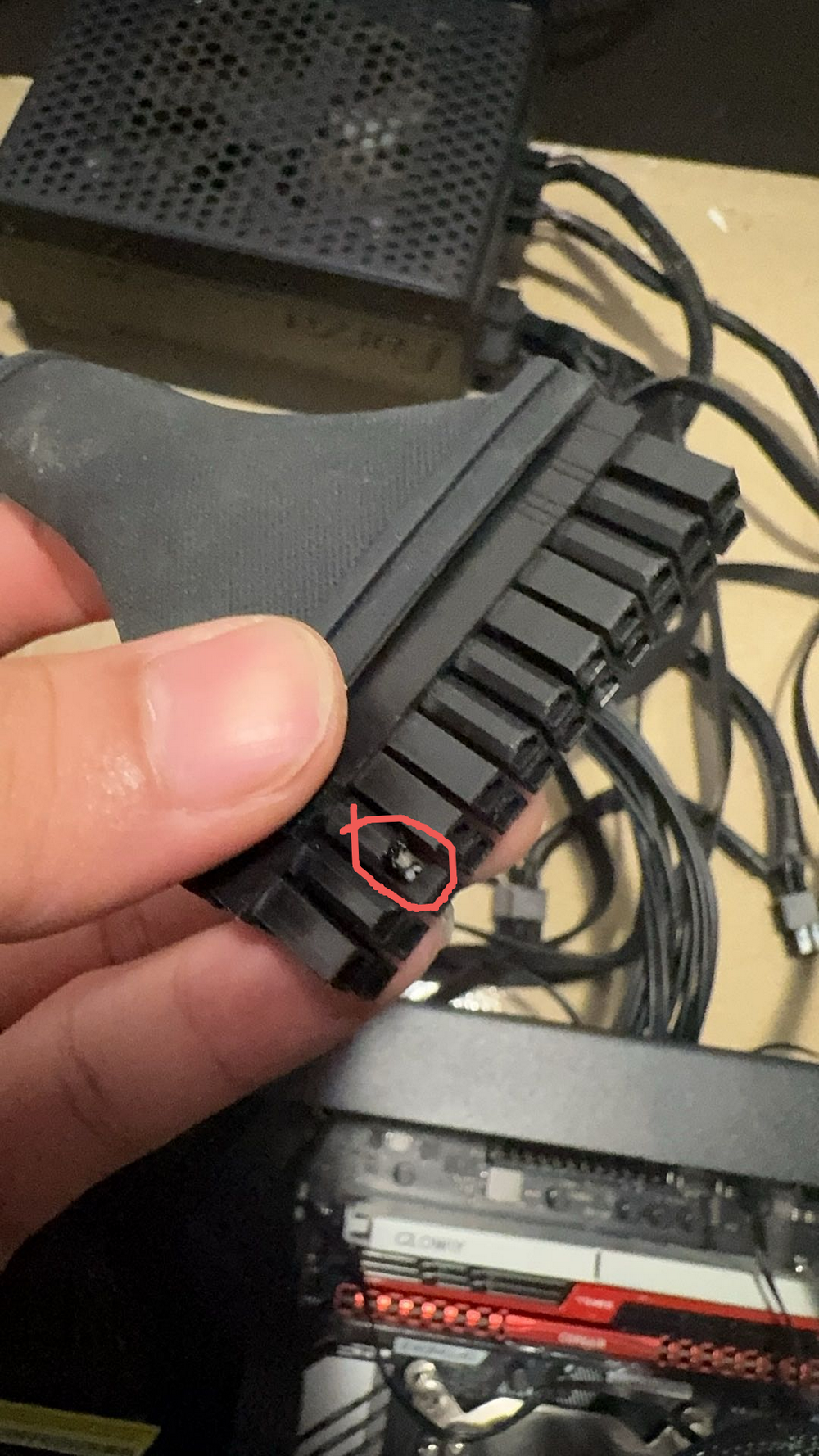
The power cord is aging and damaged
Motherboard : Each channel of the motherboard (whether x1, x8, or x16) can only support one graphics card. For example, if there are several channels, several graphics cards can be supported. The B85 motherboard that was popular during the Ethereum mining period is a good choice.
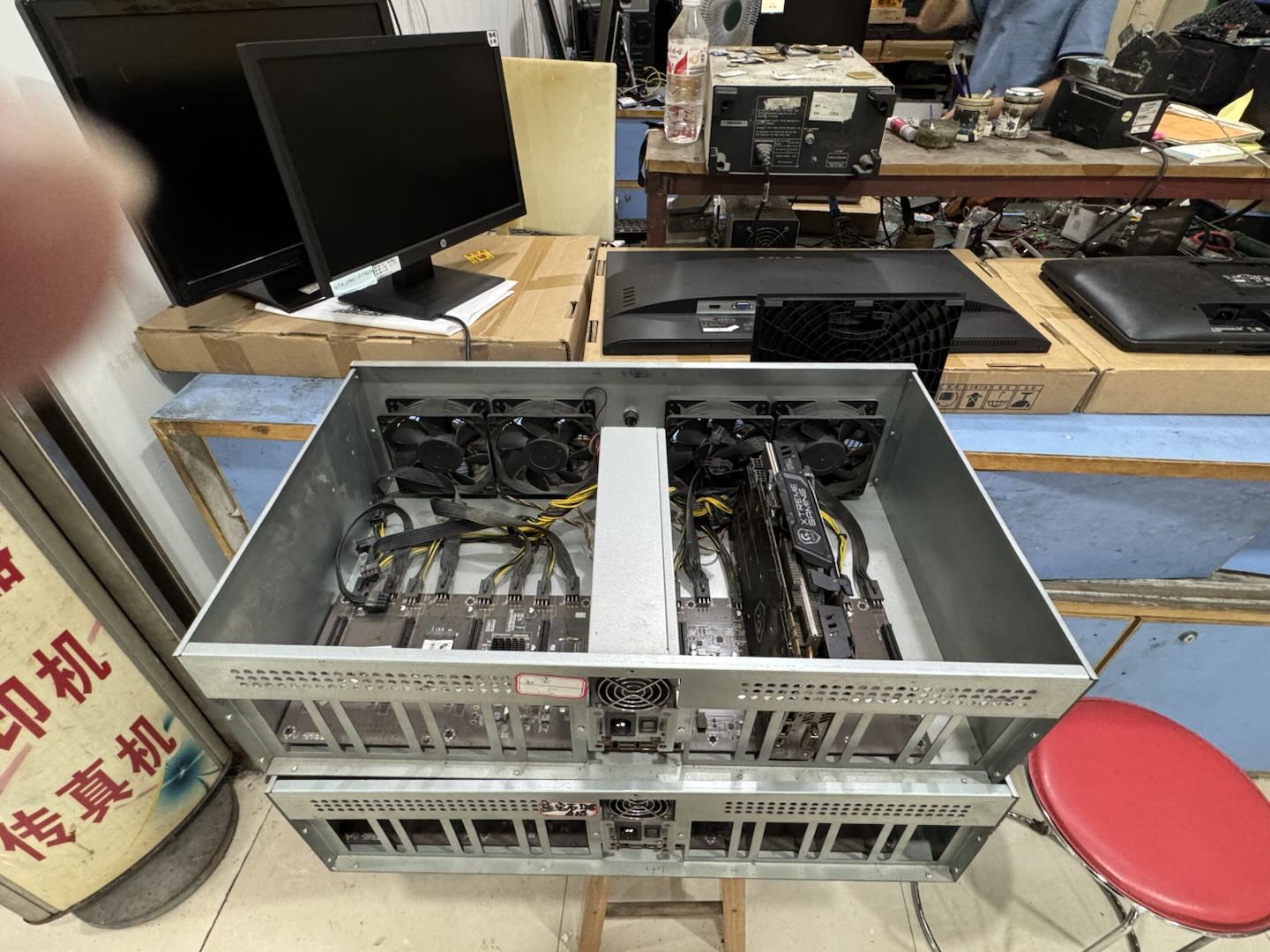
The B85 platform that the author left behind when he participated in Ethereum mining has been scrapped
CPU : Because multiple tasks need to be processed simultaneously, the more CPU threads the better. When using Docker to start mining, a large amount of CPU resources will be occupied in the early stage. If multiple graphics cards are used, they must be started one by one in sequence, otherwise the system may crash or freeze.
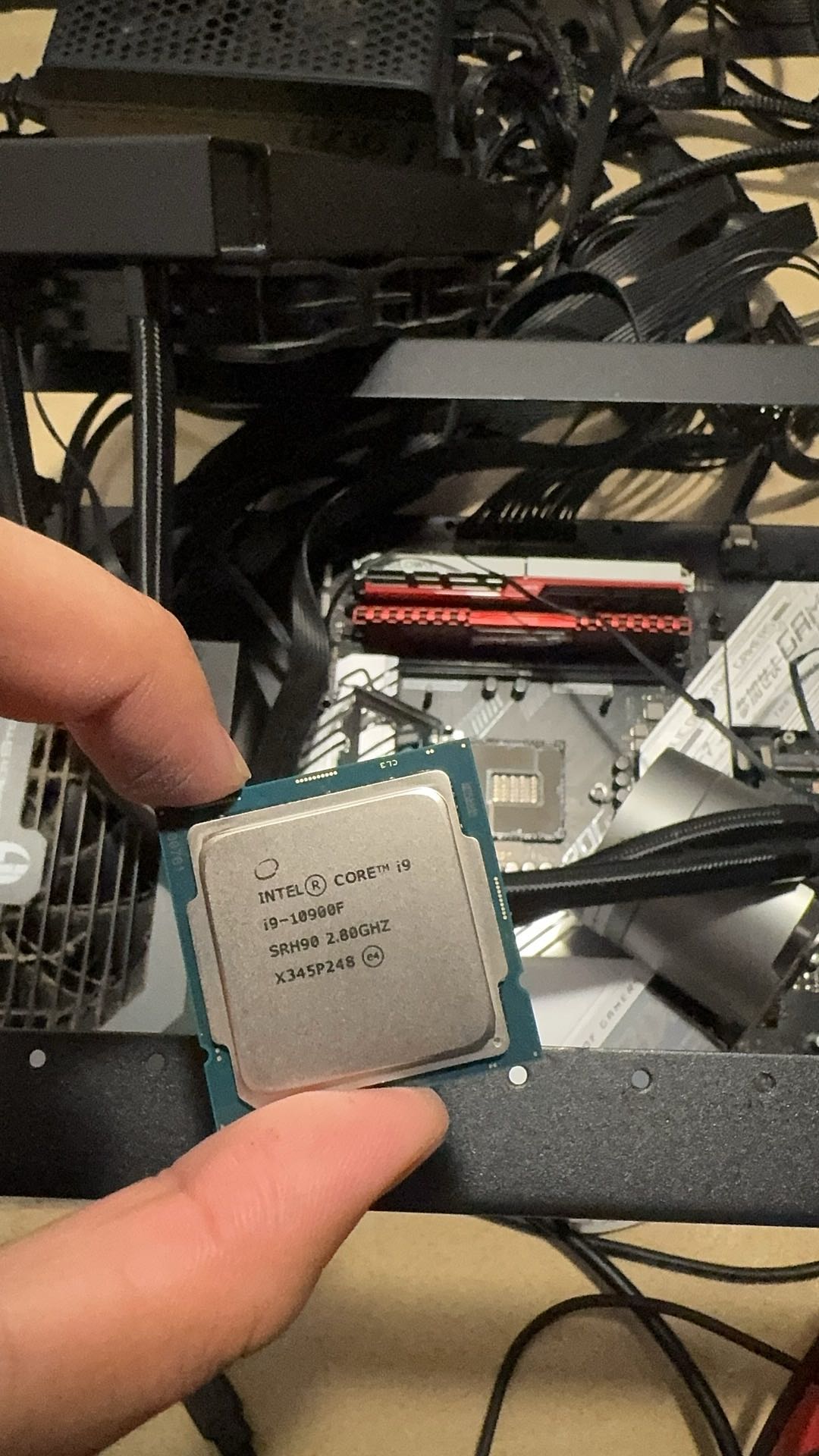
Young people should use i9, there is no need to use e5 just for the sake of face
Graphics card : A Docker process takes up about 6 GB of video memory (the official document says 8 GB, but in fact 6 GB is enough). If the graphics card has 12GB of video memory, you can run two Docker processes on one graphics card. When mining, the graphics card's workload will occupy 50% to 90%, and the graphics card's temperature should be kept within 85 degrees, which is reasonable and safe.
PCIE adapter cable : It is recommended to use a x1 to x16 PCIE adapter cable, with x1 plugged into the motherboard and x16 plugged into the graphics card. If you use a 40 series graphics card, you need to use an x16 extension cable.
Network connection quality : Network connection quality will have a great impact on mining efficiency. The author's test found that the network nodes in Singapore received more computing tasks than the nodes in Hong Kong, which means that choosing a better network node can improve mining efficiency.
If a fault occurs during mining, first check the operation status of the motherboard and software. If the problem occurs at the software level, you can check the terminal error information to determine whether it is a memory error and you need to restart the computer; or it may be due to the official file update, and the local mining machine has not updated the code in time. The solution is to replace the node or update the code.
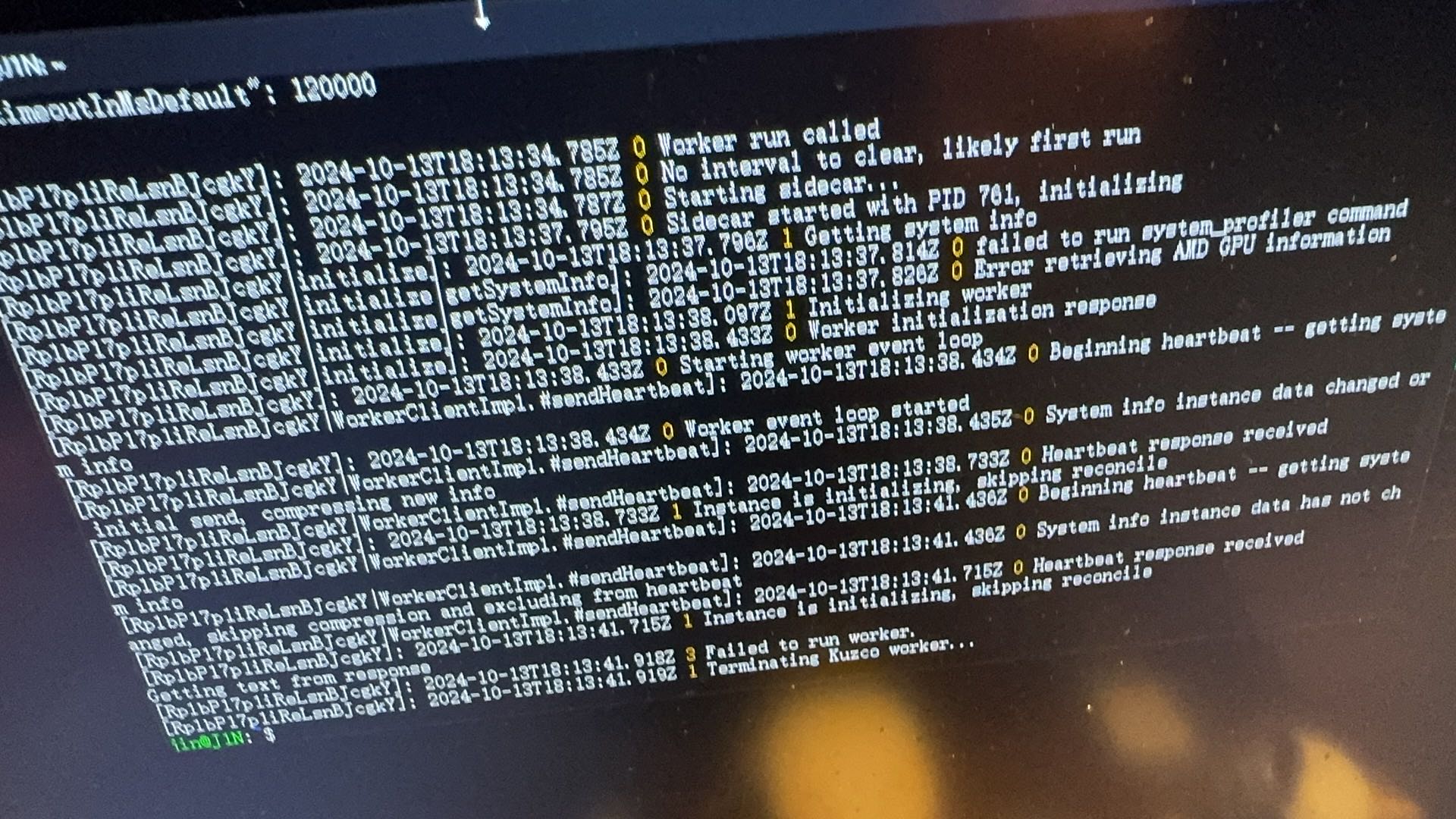
Runtime Error
At the hardware level, if the mining machine cannot be turned on, first check the fault light on the motherboard. Taking the ASUS motherboard as an example, the most common problem is that the VGA light is on white, which means that there is a problem with the graphics card power supply. In this case, you can try to re-plug the PCIE and graphics card power cord. However, sometimes the white light may be on but the machine is still running normally.
Summarize
Although I called io.net a "castle in the air", meaning that its market value was seriously overestimated, it did successfully raise $40 million with a valuation of $1 billion. However, after io.net went online, many imitations appeared, and the products and investors behind these imitations could not withstand rigorous verification, indicating that the success of io.net is not something that every project can easily replicate.
Based on this observation, I have been looking for a mining project with more practical value. Finally, I found Kuzco. First, Kuzco was incubated and supported by a16z, which increased its credibility and potential. Second, Kuzco's mining mechanism actually provides computing power services through GPUs.
More importantly, from a macro perspective, in the field where Kuzco is located, large language models (LLMs) are the most widely used AI products by the public. Countless people around the world use these models every day, and these models require huge computing power support. The author believes that providing computing power for such a huge demand is not only very meaningful, but also has practical commercial value. Therefore, Kuzco is a project worth paying attention to.
The cost of participating in the GPU computing network is low, especially the price of 40 series graphics cards in the second-hand market is stable and the depreciation cost is low, so it is worth buying. However, the author reminds you not to choose to rent a graphics card, because the cost of renting a card is much higher than buying a second-hand graphics card. At the same time, Kuzco's airdrop incentives are unclear, and there will be a high risk if you rashly rent cards on a large scale.
And the mining machine itself has high practical value. It can not only be used to mine Kuzco, but also is more stable and reliable than directly investing in high-risk Altcoins. Because the mining machine has good scalability, in addition to mining Kuzco, it can also be used to mine other GPU projects, or use it to become a node validator of the blockchain, running some scripts and services to increase more income. This means that even if Kuzco is no longer mined, the mining machine can still continue to generate value.
Finally, many people ask how much profit can be obtained from mining in a day. There is no clear answer to this question. Except for the project party, no one can accurately know what the final profit is. The return of mining is very uncertain. It may be very high or lower than expected, so it is impossible to determine in advance how much money can be earned.













